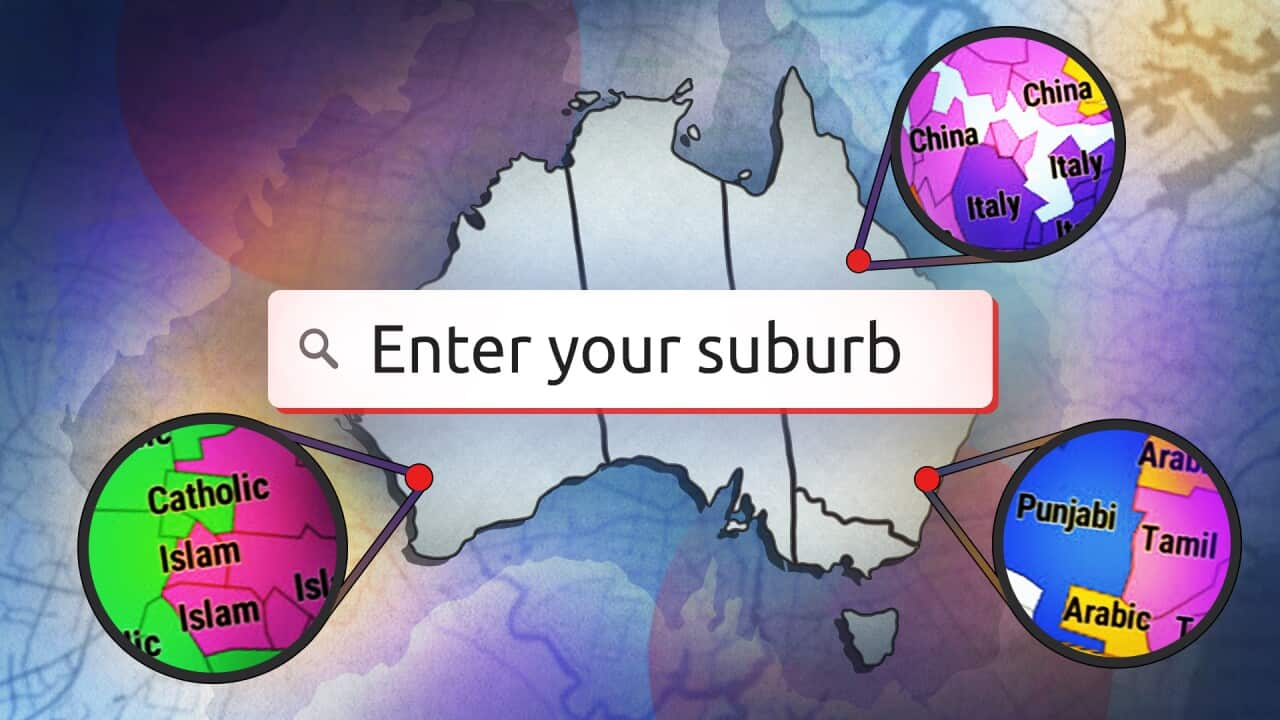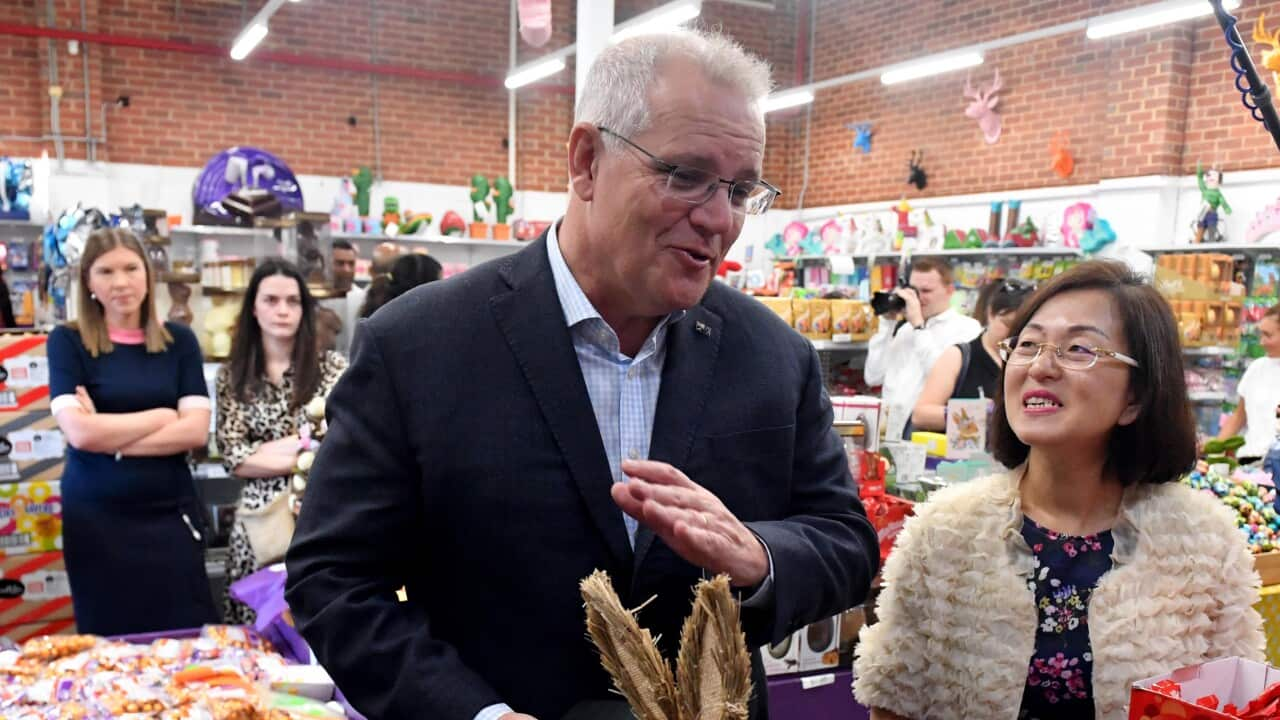

6 min read
This article is more than 2 years old
Interactive
How did your neighbours vote in the 2022 Australian election?
Australia got a new government for the first time in nine years due to the 2022 federal election. You know how you voted, but what about your neighbours? Search your address below.
Published 28 December 2022 5:55am
By Charis Chang, Ken Macleod
Source: SBS News
Do your political views align with your neighbours'?
This year's federal election saw a seismic shift in Australia's voting patterns with a "large-scale abandonment" of the major political parties. It even inspired the - 'teal' - which describes a type of independent candidate.
In 2022, 10 independents were elected (compared to three in 2019), the Greens increased the number of its MPs from one to four, and representatives of the Centre Alliance and Katter's Australian Party were also re-elected.
SBS News has created an interactive map using first preference data from the Australian Electoral Commission to show the changes in people's voting patterns from the previous election.
Type in your address in the interactive below to see how people voted at polling booths within two kilometres of where you live.
The interactive shows whether votes for the major parties as well as minor parties including Pauline Hanson's One Nation party increased or decreased. You can click on the party 'bubbles' that pop up below to find out more about the candidates and the number of votes they received.
It also includes ‘informal’ votes, or ballot papers that were incorrectly filled out, that were not counted towards the election result.
If your address brings up no polling stations, search for the nearest town. The letters PPVC on the map refer to pre-poll voting centre.
As well as your own neighbourhood, it's also worth looking at electorates such as Kooyong, North Sydney and Fowler (try searching for the address 'Liverpool, New South Wales') to see just how they returned such shock swings.
And here are a few more things we learnt from this year's election:
Teal voters were not 'disaffected Liberals'
The 2022 Australian Election Study, Australia's largest and longest-running study of elections, found almost one in three people voted for a minor party or independent candidate - the largest number in almost 100 years.

Teal independent Monique Ryan toppled federal treasurer Josh Frydenberg in the seat of Kooyong at the 2022 election. Source: AAP / Luis Ascui
The study, which was released in December and is led by the Australian National University with Griffith University, found most teal voters were not 'disaffected Liberals', but tactical Labor and Greens voters.
Fewer than one in five teal voters had previously voted for the Coalition, with the report finding they were ideologically close to Labor voters - placing themselves just left of centre.

Many teal voters supported Labor and the Greens in the previous election. Source: SBS News
"The teals also ran well-funded, well-organised campaigns that were widely covered in the media," Dr Cameron said.
"These campaigns tapped into frustrations with the incumbent Coalition government on issues where they were perceived as weak, including climate change, political integrity, and gender equality.
"The medium-term success of the teals will depend on how much they can create a distinct political identity to carry to the 2025 federal election."
Votes for the two major parties fell to historic lows
Study co-author Professor Ian McAllister, from ANU, said there had been a "large-scale abandonment" of major political parties at the election.
"The key beneficiaries of this seismic shift in voting behaviour were the Greens and independent candidates," Professor McAllister said.
Just 37 per cent of voters in 2022 said they always voted for the same party, which was a record low. Back in 1967, the number was 72 per cent.
The study also found Labor leader Anthony Albanese was the most popular party leader since Kevin Rudd in 2007.

Anthony Albanese was the most popular party leader since Kevin Rudd in 2007. Source: AAP / LUKAS COCH/AAPIMAGE
"Labor entered the election with a leader, Anthony Albanese, who was more popular than both Scott Morrison, and his Labor predecessor, Bill Shorten," Dr Cameron said.
Mr Albanese scored 5.3 on a scale of 10 when it came to popularity, compared to Mr Morrison on 3.8. This was down from his score of 5.1 in the 2019 election.

Scott Morrison was the least popular major party leader since the start of the Australian Election Study in 1987. Source: AAP / Richard Wainwright
Coalition vote among young people collapsed
The Coalition's share of the vote fell in almost every age group but particularly among the youngest Australians.
About one in four voters under the age of 40 reported voting for the Coalition in 2022. This is the first time in the 35-year history of the study that such a low level of support for a major party was reported among a large portion of the voting public.
In contrast, Labor's support remained virtually unchanged compared to 2019, with about 38 per cent of voters under the age of 40 supporting the party.
Gender differences in support for minor parties
There was also a difference in voting patterns among male and female voters.
While 38 per cent of men voted for the Coalition, just 32 per cent of women did so. The trend was flipped for Labor, with its candidates attracting 36 per cent of women’s votes, compared to 32 per cent of men.

Voters queue outside an Australian Electoral Commission voting centre in the electorate of Tangney, Perth. Source: AAP / Richard Wainwright
But more men (22 per cent) than women (16 per cent) voted for minor parties in the 'other' category, driven by more men voting for minor populist parties including Pauline Hanson’s One Nation and the United Australia Party.
Support for independents likely to grow
Professor McAllister said he believes support for independents and minor parties would only continue to grow in Australia.
He said the conditions for the shift to independents had been building over several decades.
"Voters are now less 'rusted on' to the major political parties and becoming more independently minded in their political choices," he said.
"This trend has been driven by wider societal changes, such as the huge expansion of higher education, the turnover of generations, the rise of social media, and shifting issue priorities."
Explore another SBS News interactive here:
READ MORE

How multicultural is your suburb?
Would you like to share your story with SBS News? Email


